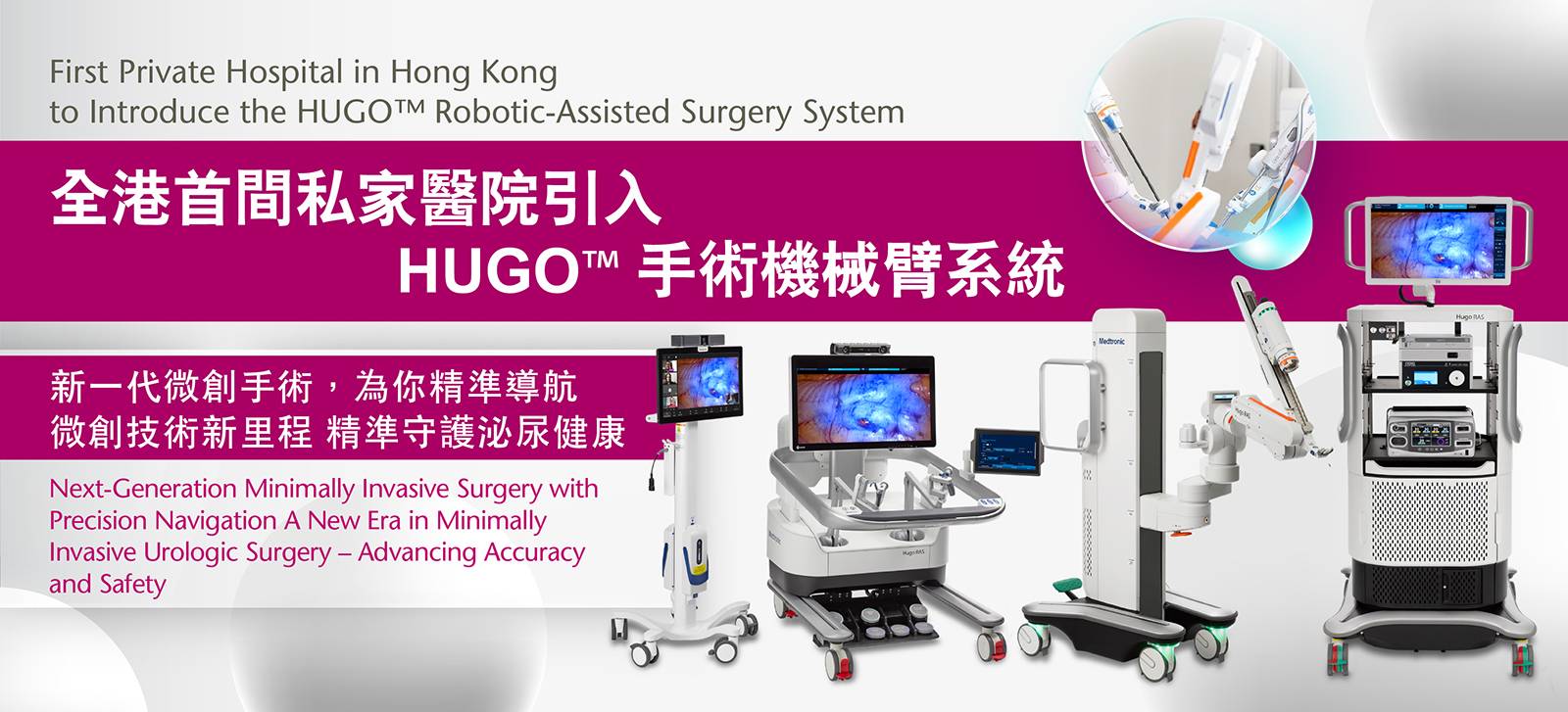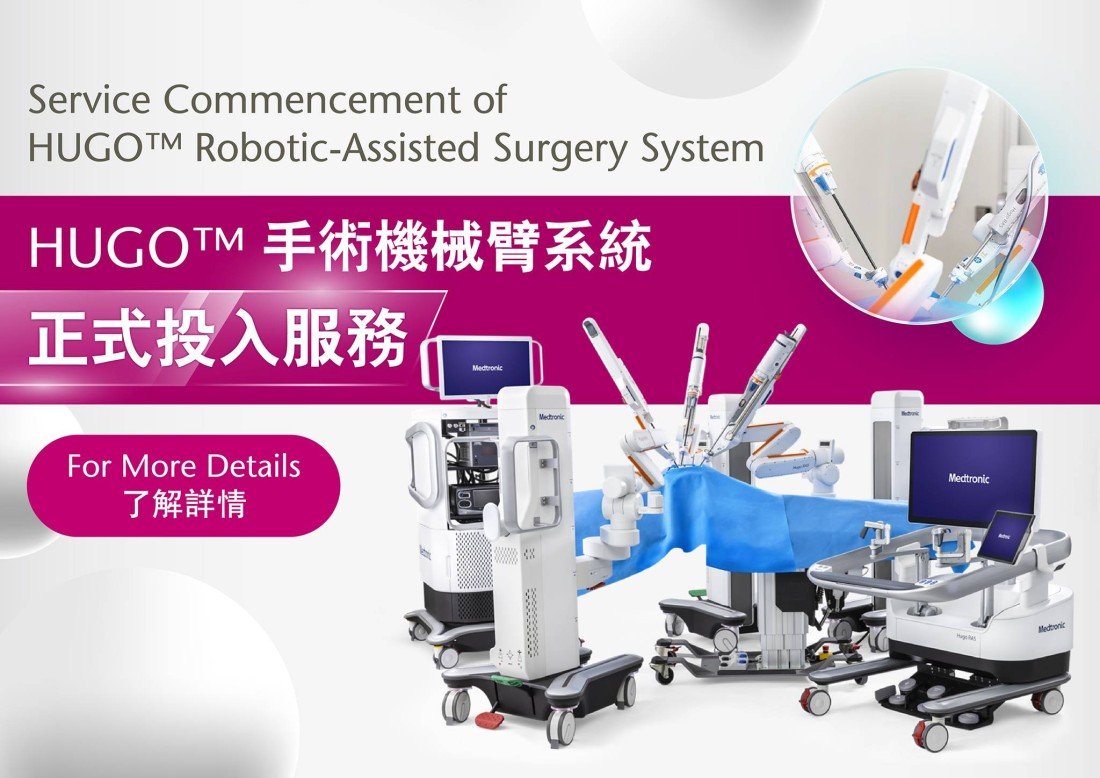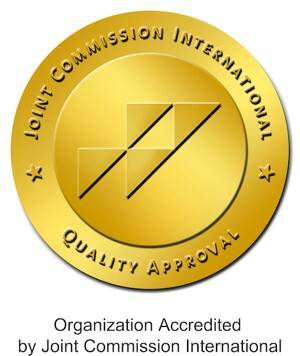Robotic surgery is a method of surgery performed with the assistance of a robotic system. It combines the expertise of a surgeon with the precision and stability of a robotic system, which comprises multiple robotic arms and surgical instruments. Surgeons perform robotic surgery by operating the robotic surgery system.
- What kind of surgery can adopt robotic surgery?
Robotic surgery is used in many surgical fields. At Hong Kong Adventist Hospital - Tsuen Wan, robotic surgery may be used in urology surgeries.
- Who should receive robotic surgery?
Robotic surgery may be used across various specialties, and is considered an effective surgical method for certain cases. Whether a patient is a good candidate for robotic surgery depends on the doctor’s assessment based on the patient's specific condition and needs. Patients should discuss the benefits and risks of robotic surgery with their medical team to make an informed decision.
- Who should not receive robotic surgery?
While robotic surgery is generally safe and effective, some patients may not be suitable candidates for this type of surgery. Patients who are excessively overweight, for example, may not benefit from robotic surgery as the system needs to be able to position and operate on the patient with precision within the confines of the surgical area, and the patient’s body size may affect the movement of the robotic arms. Patients should discuss with their medical team to determine the suitable surgical approach.
- What are the advantages of robotic surgery over traditional surgery?
- Minimally invasive surgery: robotic surgery is performed through smaller incisions, making it less invasive compared to traditional surgery. Surgical trauma, pain, and risk of bleeding are reduced, while recovery time is shortened.
- Enhanced precision: robotic systems are highly flexible and precise, allowing for accurate movements and increased control. Surgeons are able to make more accurate assessments, thereby improving the success rate of surgeries.
- 3D visualization system: robotic surgery systems provide high-definition 3D visualization, offering surgeons a clearer view of the surgical area and allowing them to perform operations with greater precision and accuracy.
- Improved stability: robotic systems offer stability and tremor compensation that counteract the surgeon’s minor hand tremors, facilitating more stable and smooth operations and reducing surgical risks.
- Remote operation: robotic surgery may be performed remotely with surgeons controlling the system while seated at a console. This reduces the physical strain a surgeon may experience from having to maintain a fixed posture and position for extended periods of time.
- Enhanced safety and reduced trauma to soft tissues and other organs
- Reduced postoperative pain, contributing to faster recovery
- Any risk from robotic surgery?
Each surgery is unique, and the risks and complications depend on the patient's condition and the complexity of the surgery. The medical team assesses each patient's risks and provides appropriate recommendations and preventive measures. Patients should discuss the risks and benefits of the surgery with their doctor and consider their options carefully before making a decision.
- Would it be more expensive for using robotic surgery than traditional surgery?
The cost of the surgery depends on the patient's condition and the doctor's recommendation. Robotic surgery may be more expensive than traditional surgery, but it significantly improves surgical flexibility and allows for more precise treatment of areas that may be difficult to reach with traditional surgery. This often leads to shorter hospital stays and faster recovery, and therefore potentially reduces the overall medical cost. In light of this, the surgical cost of robotic surgery cannot be directly compared to that of traditional surgery.
- Any qualification or training for doctors who in charge of robotic surgery?
To ensure the safety of robotic surgery, doctors and medical teams need to understand the operation and functions of the robotic surgery systems. They must undergo specific professional training and meet the necessary qualifications before they are allowed to perform robotic surgery at the hospital.



















